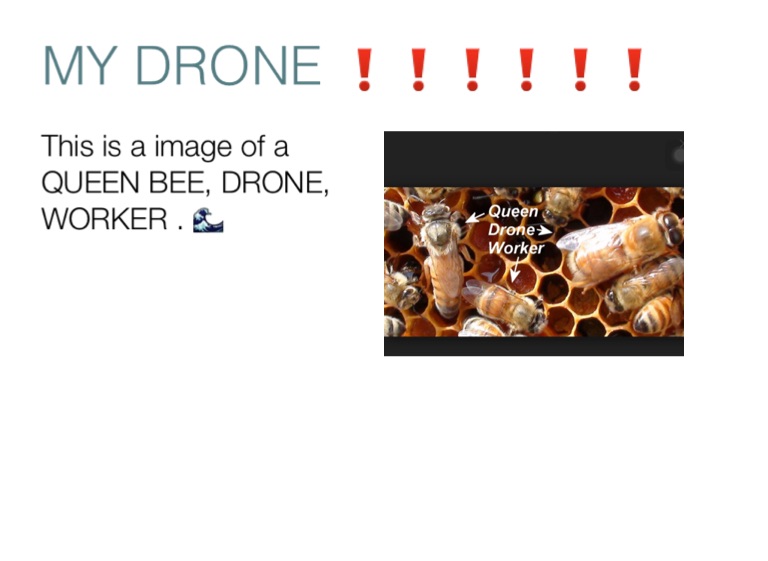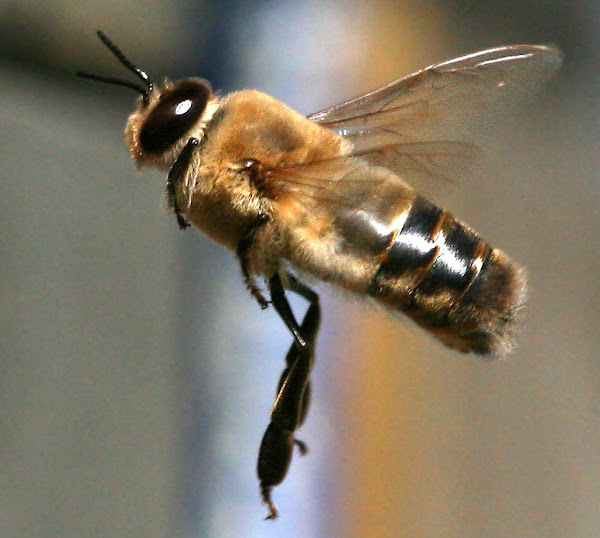
Pollen is a nitrogenous food and is essential for brood - rearing and young bees. Later on they become foragers, collect water, pollen, nectar and propolis (bee-blue). For the first 2 to 18 days of their life, the bees perform indoor duty inside the hive, including comb construction when some young bees start secreting wax. When they are grown and their hypopharyngeal glands have developed, they secrete the royal jelly with which they feed the younger larvae. Normally, the young bees, immediately after their emergence, do the work of cleaning cells and feeding older larvae. The division of work within a colony among the worker bees is based on the age of the individual and on the needs of the colony. Their range of flight varies from 1,000 to 1,500 m. The life-span of a worker is about 4 weeks during active season and 8 to 10 weeks during less active season. These workers, called laying workers, are killed as soon as a new queen is introduced or produced in the colony. On certain occasions when the colony is in need of a queen, some of the workers start laying eggs from which only drones are produced. They are imperfect females incapable of laying eggs.

The number of workers in a colony varies from 1,500 to 50,000. The workers are the smallest inhabitants of the beehive. Its abdomen has to burst open to allow the genital organ to function The drone dies in the act or immediately afterwards. Mating takes place in the open when the queen is in flight. The normal life-span of a drone is 57 days. The drones are produced by unfertilized eggs of the queen, or by those workers which take up the reproductive function due to the absence of a queen in a colony. They are driven out of the hive to die of starvation before the monsoon and the winter. The drones are reared and tolerated during the breeding season. The number of drones in a colony often is very large amounting to hundreds and sometimes to thousands. They go out of the hive only at the mid-day when the weather is warm. They also help in maintenance of hive temperature. Their only function is to impregnate the young queen a task which they are unable to perform until they are about 10 days of age. They are, therefore, physically incapable for the ordinary work of the hive. They have no sting a suitable proboscis for gathering nectar is also absent. They are much larger and stouter than either the queen or the workers although their body is not quite as long as that of the queen. The queen never leaves the, hive except with a swarm. If the food is scarce, workers do not permit the queen to lay eggs.The queen is carefully, looked after by young workers, known as-attendants, which feed her and keep her clean and well combed. The number of eggs and egg laying depend on the availability of pollen and nectar in nature. There is a good family planning in the colony. The phenomenon of raising queen in off-season is called supersedure. Generally queens are reared only during swarming season, but if the queen dies accidentally the bees can rear a new queen. The old queen is killed as soon as the new queen is fertilized. Only one queen can remain in a colony, but during unfavourable season two queens are also observed.

The queen is reared in large finger-shaped cells in the lower portion of the combs. becomes the queen is fed the royal jelly, a secretion from hypopharyngeal glands of the worker bees. The differentiation in worker and queen is due to the quantity and quality of food fed to the larva. The queen can lay either fertilized or sterile eggs depending on the requirement.

The queen substance if present in sufficient quantity, prevent swarming and absconding of colonies, prevent development of ovary in workers, and maintains colony cohesion. The secretion from mandibular gland of the queen is called queen's substance. When her spermatheca is filled with sperms, she will start laying eggs and will not mate any more. Five to ten days after emergence, she mates with drones in one or more nuptial flights. It lays upto 2000 eggs per day in Apis mellifera. The queen is the only individual which lay eggs in a colony and is the mother of all bees. Because of her long tapering abdomen, it appears more wasp-like than other inmates of the colony. Her wings are much shorter in proportion to her body. It is considerably larger than the members of other castes.


 0 kommentar(er)
0 kommentar(er)
